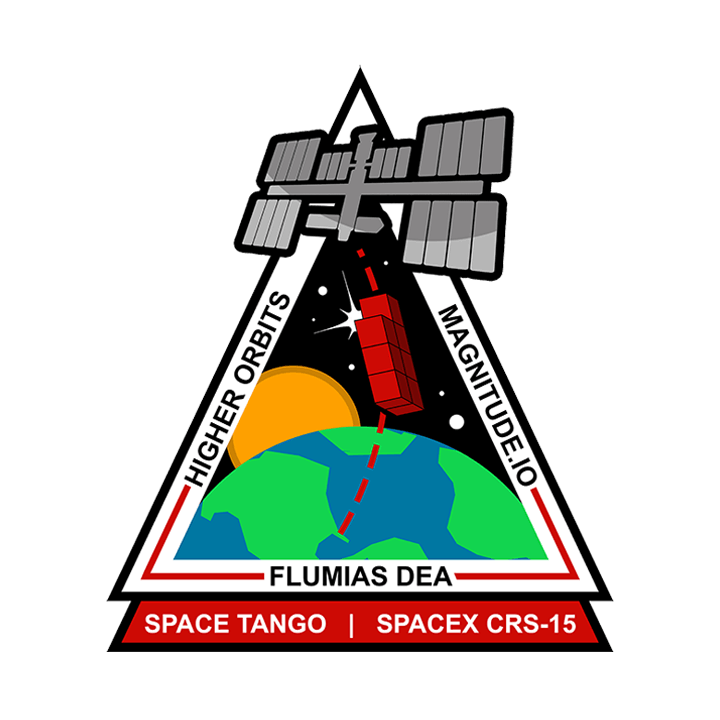
We use cookies to ensure that we give you the best experience on our website. If you continue to use this site we will assume that you are happy with it.
Ok ✕

First Evaluation of Miniaturized Fluorescent Microscopy Providing 3-Dimensional Live-Cell Imaging Onboard the International Space Station
CAPE CANAVERAL, Fla. (June 29, 2018) – Space Tango announced today that a 7U CubeLab™ containing the FLUMIAS-DEA miniaturized fluorescent microscope developed by partner Airbus Defence and Space and TILL I.D. GmbH for the German Space Administration (DLR) is part of the Space Tango payloads launched on the SpaceX Commercial Resupply Services- 15 (CRS-15) mission from Cape Canaveral Florida at approximately 5:42 AM EDT this morning. This is the precursor to a more complex mission focused on expanding fluorescent microscopy capabilities for live-cell imaging onboard the International Space Station (ISS).
“In this technology demonstration, fixed and live cells will be evaluated with recorded images at well-defined intervals over a two-week period of cell-culture during the mission,” said Rainer Treichel, Project Manager, Airbus Defence and Space GmbH, Germany. “FLUMIAS results from parabolic (24th DLR PFC) and sounding rocket (TEXUS 52) flights conducted by Space Biology and Life Sciences Professor Oliver Ullrich and Professor Daniela Gabriele Grimm have demonstrated the power of insights that can be gained from this technology in microgravity and we look forward to the results from this long-term space experiment, a first for the ISS.”
“In addition to the ScienceBox partnership that we announced at the end of last year, we are very pleased to support DLR and Airbus in this technology demonstration and look forward to providing additional support for future efforts to establish this capability on station,” explained CEO Twyman Clements. “This technology provides completely new insights into human tissues, cell cultures, microorganisms and plants. Working together with DLR and Airbus to successfully expand research capabilities on the ISS with tools like this, accelerates and expands the opportunities to conduct research on station that improves life on Earth.”
Additional payloads accompanying FLUMIAS-DEA to low Earth orbit are STEM payloads from academic partners Higher Orbits and Magnitute.io carrying bees and microgreens, respectively, evaluating agricultural and manufacturing processes in space and on Earth.
Space Tango payloads launched for the CRS-15 missions to be installed on the ISS include:
Payloads:
Airbus Defence & Space
Flumias-DEA
PI: Prof. Dr. Oliver Ullrich, Otto-von-Guericke-University, Magdeburg, Germany
Co-I: Dr. Cora Thiel, University of Zürich, Switzerland
PM: Rainer Treichel
The mission objective of Flumias-DEA is to demonstrate the technology for miniaturized fluorescence microscopy in space by observing two scientific samples in a temperature-controlled environment. One sample is of fixed (dead) cells and the second sample is of live cells. It is a DLR precursor mission to pave the way for a much more complex mission in which results could provide a foundation for a scalable and powerful fluorescence microscope which provides 3D imaging of biological samples.
Higher Orbits
Megachile rotundata Proprioception and Flight Patterns in Microgravity
PI: Michelle Lucas
The objective of the Megachile rotundata Proprioception and Flight Patterns in Microgravity experiment is to observe the behavior and flight patterns of alfalfa leaf cutting bees (Megachile Rotunda, a.k.a. ALCB) in the microgravity environment. M. Rotunda is an efficient pollinator though it is solitary and does not build colonies or store honey. Data to be examined during the life of the experiment includes flight patterns, feeding behavior (somatosensory functionality), proprioception, general locomotion, and any morphological changes. Better understanding the behavior and physiological changes of bees in space (for which ALCB provide an excellent baseline given their standard bee physiology) has practical application in the future of horticulture and agriculture on earth and in space. The experiment seeks to determine the effects of extraterrestrial conditions – including microgravity – on the flight and feeding patterns, proprioception, adaption, and lifespan of the Megachile rotundata Alfalfa Leaf Cutter Bee. The experiment has impacts on agricultural practices on Earth, in space, and beyond, as well as providing insight as to the impacts of earthbound forces on proprioception and orientation.
Magnitude.IO
Growth of Assorted Microgreens in Microgravity
PI: Ted Tagami
The Growth of Assorted Microgreens in Microgravity studies the morphology and physiology of the germination of four different microgreens within modular growth chambers in microgravity. The seeds are placed under automatic growth lighting conditions to provide day and night lighting cycles that simulate successful terrestrial lighting. While imaging and numerous environmental sensors provide incremental evaluation of the plant growth on the International Space Station, multiple terrestrial control experiments will be conducted for comparison. The Growth of Assorted Microgreens in Microgravity experiment demonstrates modular, autonomous and retrievable crop research in space by contributing to the understanding of plant cultivation in service of food, oxygen and other habitat requirements on long term space missions. This experiment also provides insight on plant grown under unusual conditions and can inform crop science, basic biology and horticultural applications on Earth.